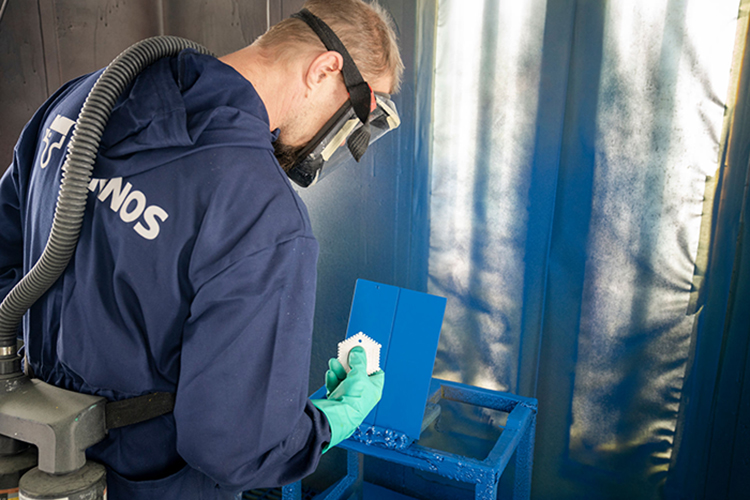Creating a safety culture
At Teknos, we want to make people take safety into their hearts and everyday work. “Actions do not mean anything, if people are not committed to safety in their everyday work”, says Tiina Partanen Group QEHS Manager.
Safety first has been the fundamental theme at Teknos since long time. Still, actions such as safety instructions, safety moments and wearing personal protective equipment (PPE) don’t mean anything if people are not committed to safety.
“Safety is all about getting to people’s hearts and minds, not just to their heads. Creating a safety culture doesn’t come without really influencing to people attitudes in everyday normal work. When people feel that they are listened and their opinion matters, then the team effort will make remarkable difference to the behaviour towards safety”, Tiina points out.
Safety walks show the commitment of leadership
Safety begins on the invidual level, is pursued on the team level and requires also strong leadership.
“There’s a lot of evidence that strong commitment from management is a key factor in successful safety programs and the same goes with people engagement in safety. This goes to all functions – from sales to R&D, from operations to HR and so on. Also, it is everyone’s task to make safety observations and to protect their own health and life and the health and the lives of their colleagues at all times”, Tiina says.
At Teknos, all employees are encouraged to do safety observations. Management Safety walks, on the other hand, are great means to make the commitment of leadership to safety visible for everyone. The purpose of safety walks is to assess the safety culture of the factories and the knowledge of safety issues among the personnel. During the tours the local management makes both positive observations as well as identifies areas for improvement.
Towards proactive safety
One important development step for Teknos is to move from ‘compliance safety’, with success measured by number of failures, to ‘proactive safety’ and to measure success in opportunities to prevent workplace incidents. This is supported by both modern tools and global guidelines.
“More than half of our manufacturing sites have already gone through the external ISO 45001 Gap audit and EHS compliance assessment. The rest of the sites will follow during 2019–2020”, Tiina says.
“Further, to support developing the safety culture we will take a new QEHS tool into use, which will enable us to learn from each other, analyse incident root causes, benchmark and share opportunities”.
“But in the end – no tools will make the change alone – it’s all about people and leadership”, Tiina ends.
